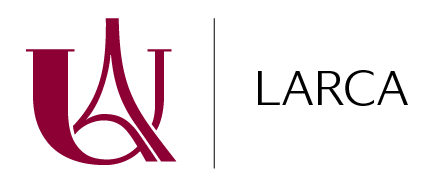Calendrier 2021/2022 – semestre 1 :
- 20 Septembre
17h30 (salle 340 + live stream)
Julian Hanich – “Striking Beauty: On Recuperating the Beautiful in Cinema.”
Film is undoubtedly an artform that affords moments of striking beauty. But while this may be hard to deny, praising a film as beautiful is also fraught with the risk of sounding apolitical at best and retrograde at worst. In fact, the history of film theory has been a story of growing suspicion towards the beautiful and thus follows the “abuse of beauty” (Arthur C. Danto) in the arts more generally. Over the last decades beauty was therefore not an aesthetic category that carried any cachet in film studies. Nevertheless, I believe it is time to pay new attention to the beautiful in film and the beauty of film—and also to defend it as an aesthetic category. In this talk I will try to make a first foray.
Julian Hanich is Associate Professor of Film Studies at the University of Groningen. From 2017 to 2020 he was also Head of the Department of Arts, Culture and Media. He is the author of The Audience Effect: On the Collective Cinema Experience (Edinburgh University Press, 2018) and Cinematic Emotion in Horror Films and Thrillers: The Aesthetic Paradox of Pleasurable Fear (Routledge, 2010). He recently co-edited The Structures of the Film Experience by Jean-Pierre Meunier: Historical Assessments and Phenomenological Expansions (with Daniel Fairfax, Amsterdam University Press, 2019) and an issue of the journal NECSUS on ‘Emotions’ (with Jens Eder and Jane Stadler, spring 2019). With Christian Ferencz-Flatz he was responsible for an issue of Studia Phaenomenologica on ‘Film and Phenomenology’ (2016). In his research he focuses on film and imagination, cinematic emotions, film phenomenology, the collective cinema experience, and film aesthetics. Website: www.julianhanich.de
- 28 octobre
Anne-Valérie Dulac (Université Paris 13, Visiting Research Fellow LARCA 2021-22 https://pleiade.univ-paris13.fr/profil/anne-valerie.dulac/), “‘An act hath three branches’: Portraying the Living in Tacita Dean’s His Picture in Little (2017)”
Séance croisée avec Environmental Humanities
Un peu plus d’infos : His Picture in Little: Shakespeare, Hamlet and Tacita Dean – National Portrait Gallery (npg.org.uk) L’intervention partira du contemporain pour parler du portrait humain/végétal dans l’art de la miniature élisabéthaine/jacobéenne - 6 Décembre : Bibliographic session; current publications and reviews of books and articles.
- 27 Janvier
Nicole Seymour (California State University, Fullerton https://english.fullerton.edu/faculty/profile/n_seymour.aspx) and Hannah Kate Boast (University College Dublin https://people.ucd.ie/hannah.boast), “Queer Zoologies”
Séance croisée avec Environmental Humanities (on the Netflix series Tiger King, zoos and queer ecologies). - 28 Mars
Présentation d’ouvrages, état de l’art, discussion des tendances actuelles dans la recherche en ACV.
Interventions de Catherine Bernard et Eliane de Larminat.– Eyal Weizman, Forensic Architecture. Violence at the Threshold of Detectability, Zone Books, 2017– Eyal Weizman, Investigative Aesthetics: Conflicts and Commons in the Politics of Truth, Verso, 2021– Oliver Marchart, Conflictual Aesthetics. Artistic Activism and the Public Sphere, Sternberg Press, 2019. - 23 Mai
Antonia Rigaud, MCF HDR, Université Sorbonne Nouvelle – Paris 3, en délagation CNRS auprès du LARCA
Entre artefact, objet et métaphore : la trajectoire du masque dans l’art états-unien
Je souhaite interroger l’histoire du masque dans l’art des États-Unis. Le masque constitue en effet un objet hybride, objet concret autant que métaphore, œuvre d’art autant qu’objet anthropologique. Il fait irruption sur la scène moderniste notamment chez Picasso ou Man Ray dont la photographie célèbre de Kiki caressant un masque africain illustre l’ambiguïté de son statut entre objet esthétique et anthropologique, il est également au cœur de la collection Barnes dont l’accrochage cherche à présenter des productions culturelles européennes et africaines sur un même plan. Le masque prend également au même moment une place importante dans la pensée de la Renaissance de Harlem où il constitue une métaphore pour penser la condition afro-américaine. A partir de cette première histoire du masque dans la culture états-unienne, je souhaite interroger le rôle que l’objet a joué dans l’histoire de l’art états-unien et afro-américain, notamment en ce qui concerne la définition de la notion de primitivisme qui fit l’objet d’une exposition controversée au MOMA en 1984 (« Primitivism in 20th Century Art »), moment tardif mais central dans l’histoire des institutions artistiques et de leur rapport avec la culture afro-américaine. A partir de cette trajectoire, je terminerai en explorant le statut du masque dans la création contemporaine à travers notamment le travail de trois artistes, Faith Ringgold, Kara Walker et Theaster Gates qui nous invitent à faire retour sur cette histoire et sur le statut du masque comme objet nous invitant à apprendre à voir.
